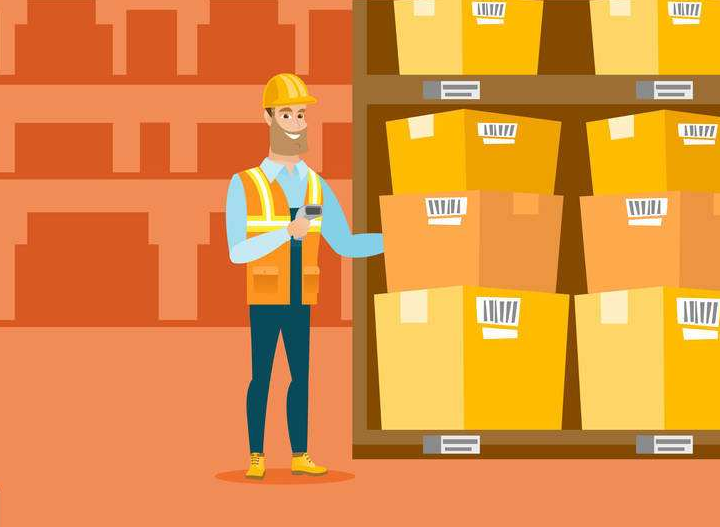RFID warehouse inventory system solution
Background
With the continuous development of the scale of the enterprise, the traditional manual warehousing operation mode and data collection method have been unable to meet the requirements of fast, accurate, economical and reliable warehouse management. In traditional warehouse management, there are problems such as low degree of informatization, continuous increase in the number of types of materials, sharp increase in the frequency of in and out of the warehouse, large management losses, and excessive manual operations that lead to inefficiency of warehousing operations and time-consuming and laborious inventory operations. Operation management brings considerable challenges.

Advantages of RFID technology in and out of the inventory management
RFID (RadioFrequencyIdentification, radio frequency identification technology), as an emerging non-contact automatic identification technology, its basic principle is electromagnetic theory, because its operation is convenient and efficient, without manual intervention, can pass radio frequency signals in various harsh environments Automatically identify targets and obtain relevant data, can identify objects in high-speed motion and can identify multiple tags at the same time.
1.It can be recognized from a long distance, instead of only a short distance recognition of a class of objects like a bar code;
2.Non-contact recognition. It uses radio frequency, which can penetrate the external packaging to read data, does not require to see the target, is not afraid of oil stains, surface damage, and the environment is dark, and the bar code must rely on the light beam to read the information;
3.It can read dozens or hundreds of objects at the same time to achieve a fast inventory effect, while the barcodes can only be read one by one;
RFID warehouse inventory management
Using RFID technology to uniquely identify each item, and the electronic tag corresponds to the item one-to-one; remote batch rapid inventory, focusing on improving inventory efficiency. Fast batch data collection is carried out on the data of each operation link such as item entry, delivery, return, inventory count, etc., to ensure that the company can grasp the real data of the inventory in a timely and accurate manner, and reasonably maintain and control the enterprise inventory.
The inventory management does not have a variety of complicated operating procedures, which specifically solves the problem of customer inventory efficiency pain points and urgently improves inventory efficiency; realizes automatic scanning of electronic tags through RFID handheld terminals, and intelligently and dynamically collects and manages target data. Improve the use of security algorithms and data encryption technology, establish a data backup mechanism, and spare no effort to escort data privacy and security.

1. Before the items are put into the warehouse, attach or sew electronic tags to each item to complete the labeling process, and the unique ID number that identifies the item is stored in the tag;
2. When the items are put into the warehouse, they are classified according to their category and model. The operator uses the RFID handheld inventory terminal in his hand to scan and identify the items in batches. After scanning, they will be placed in the warehouse to complete the warehousing process, and the scanned data will be uploaded in real time. server;
3. When the item is out of the warehouse, the operator will take out the specified model and quantity of goods from the warehouse location according to the out-of-delivery order or the newly-built delivery order, scan and identify the items in batches, and complete the out-of-warehouse process after verification, and scan the data Upload to the server in real time;
When the item is returned, the operator scans and identifies the item that has been returned, completes the return process, and uploads the scanned data to the server in real time.
Reference: rfidworld.com

Related
Application of RFID Technology in Garment Industry
The application of RFID technology in the clothing industry, RFID technology is ubiquitous in our lives, and now, many clothing companiesuse RFID technology, such as Decathlon, Uniqlo, Hailan Home, et···
NFC smart watch tag
NFC smart watch is a relatively popular electronic product in recent years. With the rapid development of smart wearable devices such as smart phones and watches, cashless payment has become a daily a···
How RFID Works
Long checkout lines at the grocery store are one of the biggest complaints about the shopping experience. Soon, these lines could disappear when the ubiquitousUniversal Product Code(UPC) bar code is r···
RFID medical cabinet
RFID medical consumables cabinet is one of the products used for drug consumables management. It is applicable to all kinds of operating room intervention rooms. It provides real-time, efficient, and ···
What are the characteristics of digital printing
In daily card printing, the more common printing methods are silk screen printing, offset printing and digital printing; offset printing requires plate making and has quantitative requirements, which ···
Intelligent Warehouse Management System
The warehouse management occupies the core position in the logistics management. The traditional warehousing industry is to collect storage fees for the business model, hope their warehouse is always ···
What is RFID technology?
The most important advantage of RFID systems is non-contact identification, which can read labels through snow, fog, ice, paint, grime, and harsh environments where barcodes cannot be used, and read t···
What is RFID Smart Bookshelf?
With the development of smart libraries, primary and secondary school libraries and public libraries have made reading services smarter through the construction of a series of intelligent facilities a···